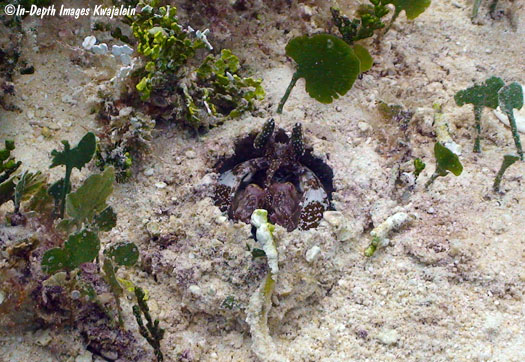
Lysiosquilla lisa appears to be the most often seen of the large, spearing stomatopod species in this genus at Kwajalein. Not often seen, you can still find their burrows in the sand with some regularity, and often the shrimp is waiting at the top of the burrow, its elongate, multifaceted eyes rotating and tilting independently watching for potential prey. This is a spearing stomatopod with the last segment of their raptorial appendages comb-like, bearing sharp spines. This appendage can be whipped out, skewering passing prey, which when the appendage are folded back up again, holds the hapless prey against the shrimp's feeding appendages and mouth where it can be eaten. Truly a creature of nightmares. It is lucky for divers they do not get a lot larger. Even so, they get quite large. We have seen them up to an estimated 25cm, although since you rarely see more than the head at the top of its burrow, it is hard to determine just how big they get.

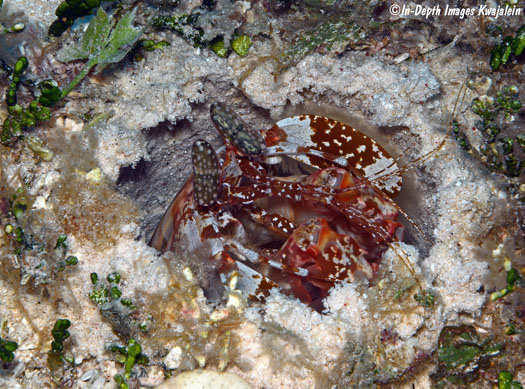
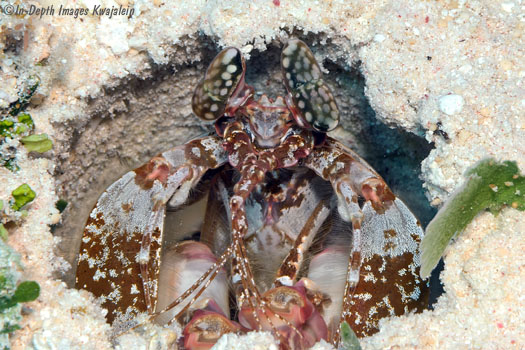
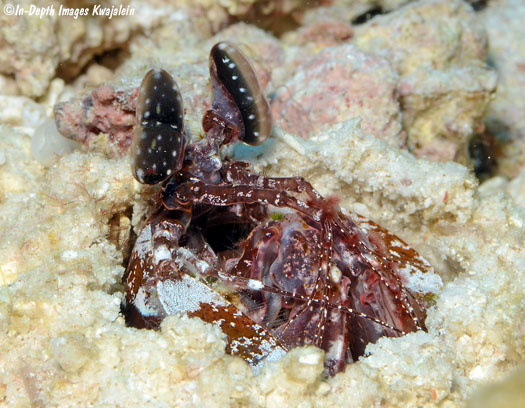
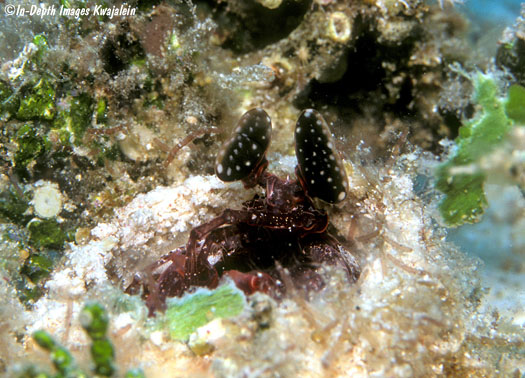
Occasionally, you can encourage one to stretch out of its hole with a small piece of bait. Note the long curved spines on raptorial appendage.
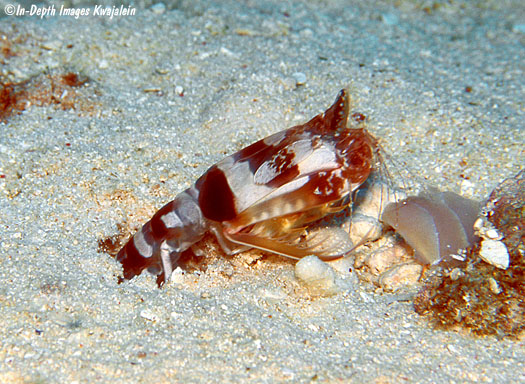
These will often discard their raptorial "combs" around the mouths of their holes after molting. Here are a few we've seen. Wicked looking.
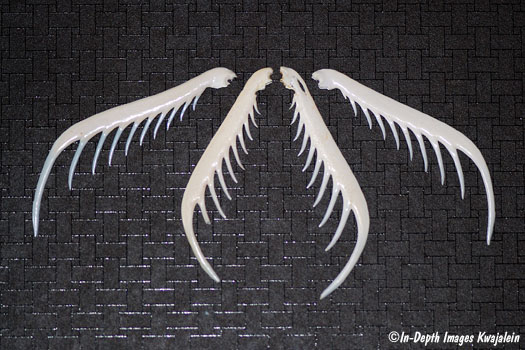
The eyes are amazing. Multifaceted and elongate with a constriction in the middle gives them binocular vision (at least) in each eye. Not only do they have great depth perception, highly useful for a spearing predator, but can even have depth perception with a single eye if one gets damaged or pecked off, allowing them to still survive and successfully hunt.
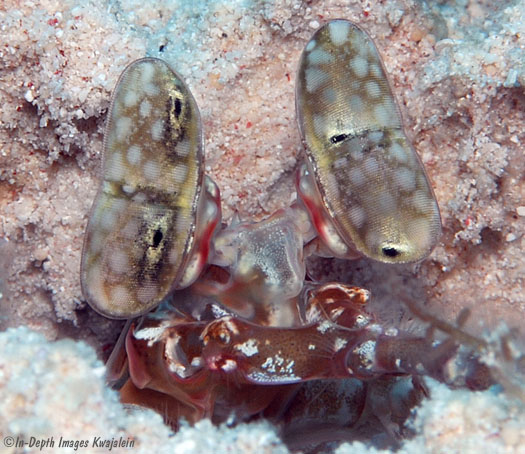
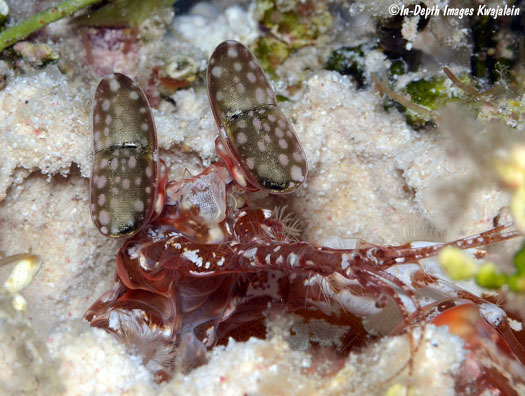
Usually you cannot see the raptorial combs with the animal in its burrow, but this one opened up just enough for me to look down and see one.
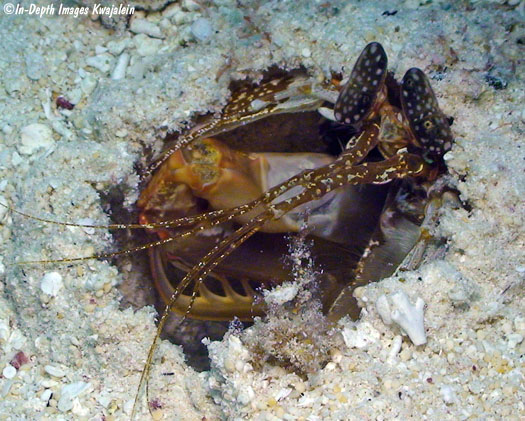
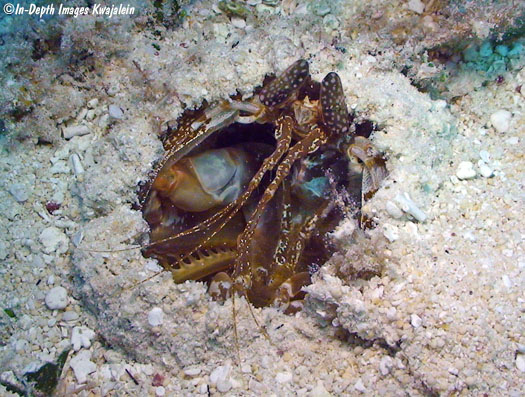
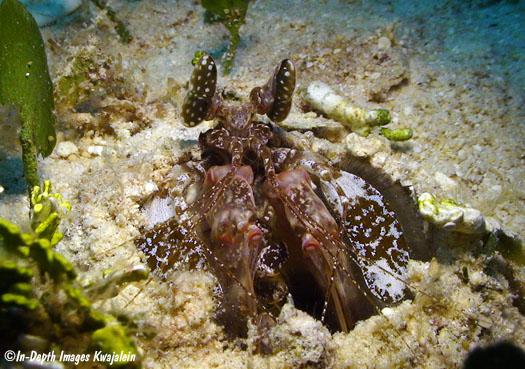
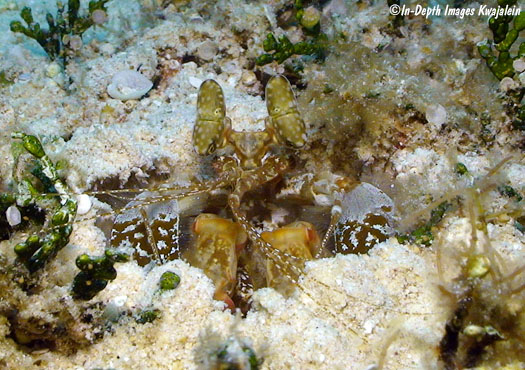
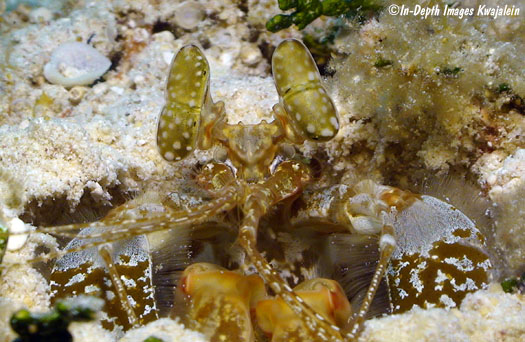
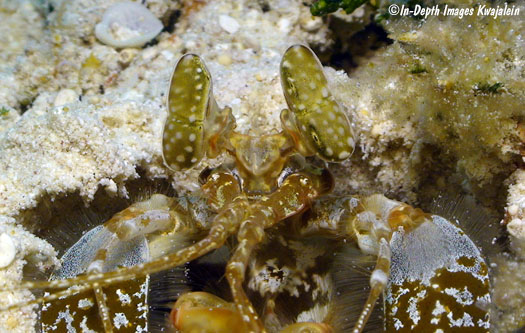
Created 15 July 2018
Updated 6 February 2024